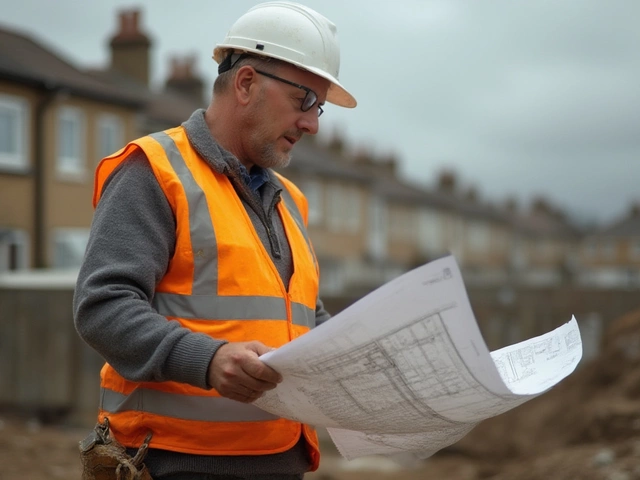Foundation Damage: What Happens and How to Stop It
If you notice doors that won’t close, cracks sneaking into walls, or a floor that feels uneven, your foundation might be talking to you. A solid foundation is the base of every home, so catching problems early can save you a lot of money and stress. Below we break down why foundations get damaged, what to look for, and practical steps you can take right now.
Why Foundations Get Damaged
Most foundation trouble starts with the ground around it. Expanding clay soil, shifting sands, or extra water pressure can push and pull on concrete or stone. Poor drainage is a big culprit – when rainwater pools near the base, it seeps into the soil, making it swell or erode. Even a slight mistake during construction, like using low‑quality limestone or not compacting the sub‑grade, can leave a hidden weakness that shows up years later.
Tell‑tale Signs You Can’t Ignore
Here’s a quick checklist you can walk through in any room:
- Cracks in walls or floors – especially diagonal or stair‑step cracks near doors.
- Doors and windows that stick – they may be rubbing against a shifting frame.
- Uneven floors – a wobble or a noticeable slope after a few years.
- Gaps around window frames – water can get in and worsen the problem.
- Exterior cracks – visible cracks in the foundation itself or in the patio.
If you spot any of these, don’t wait. The longer you wait, the more water can get in, and the bigger the repair cost.
Quick Fixes You Can Do Today
Some issues are easy enough to address yourself. Start by fixing drainage around the house. Make sure gutters direct water at least six feet away from the base, and add a simple French drain if the soil stays soggy. Small hairline cracks can be sealed with epoxy or a polymer filler – just clean the crack, apply the product, and let it cure.
For larger cracks, or if you see movement in doors and windows, it’s wise to call a professional. A structural engineer can assess whether you need underpinning, slab jacking, or a full foundation replacement. This is where a reliable supplier of quality limestone and excavation services, like Lime Hillock Construction Material Resources, can make a difference. Using the right material reduces future settlement risks.
Preventive Measures for the Long Term
Prevention beats repair every time. Keep the soil around your home well‑compacted and avoid planting large trees too close to the foundation – roots can pull moisture from the soil and cause it to shift. Install a waterproof membrane beneath any new slab or basement wall, and schedule regular gutter cleaning, especially after big storms.
Another simple habit: check the grading of your yard each spring. The ground should slope away from the house at about a 5% decline. If you see low spots where water pools, fill them with sand‑lime mix to improve drainage.
Remember, foundations don’t magically fix themselves. Spotting the warning signs early, taking quick action on small issues, and keeping the surrounding soil dry are the best ways to protect your home’s base. With a bit of vigilance and the right help, you can keep your house standing strong for decades.
How Serious Are Horizontal Foundation Cracks? A Real-World Guide for Homeowners

Horizontal foundation cracks are a serious sign of structural pressure, often caused by water and soil movement. Unlike vertical cracks, they indicate wall bowing and require prompt professional attention to prevent costly damage.
read moreDoes Homeowners Insurance Protect Against Foundation Pipe Damage?

Navigating the complexities of homeowners insurance can be challenging, especially when it involves damage from broken pipes under your foundation. This article delves into whether typical home insurance policies provide coverage for such incidents. It explores what factors might influence coverage decisions and the importance of preventative maintenance. Additionally, strategies to facilitate a smoother claims process are discussed. Here is a friendly guide to help homeowners understand their insurance policy's nuances in relation to foundation-related damages.
read more



